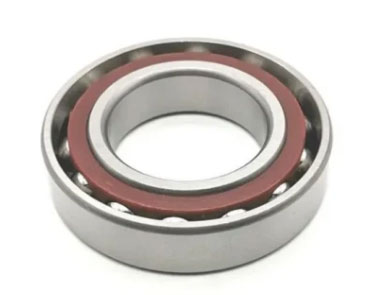Home / News / Spindle Bearing Preload: Significance, Methods, and Considerations
Spindle Bearing Preload: Significance, Methods, and Considerations
Introduction
Spindle bearing preload is a crucial factor that directly affects the performance, accuracy, and service life of spindle bearings in various types of machinery, such as CNC machines, milling machines, and lathes. Preload refers to the application of an axial force to the bearings, eliminating internal clearances and providing rigidity to the bearing assembly. This article will discuss the significance of spindle bearing preload, common preload methods, and important considerations when establishing preload for optimal performance.

Significance of Spindle Bearing Preload
Enhanced Rigidity and Load Carrying Capacity
Applying preload to spindle bearings increases their rigidity and load-carrying capacity. This results in better resistance to external forces, reduced deflection, and improved overall performance in high-speed and high-precision applications.
Reduced Vibration and Noise
Proper preload minimizes vibrations and noise during operation by eliminating internal clearances and ensuring smooth contact between the bearing's rolling elements and raceways.
Improved Accuracy and Precision
By increasing the bearing assembly's rigidity, preload contributes to improved accuracy and precision in machining processes. This is essential for achieving tight tolerances and maintaining the desired quality of machined parts.
Extended Service Life
Appropriate preload can extend the service life of spindle bearings by reducing the risk of premature wear and failure due to excessive clearances, vibrations, and misalignment.
Spindle Bearing Preload Methods
There are several methods to establish spindle bearing preload, including:
Spring Preload
In spring preload, a spring (either a disc or wave spring) is placed between the bearings to apply a consistent axial force. This method allows for easy adjustment of preload and compensates for variations in temperature during operation.
Fixed Preload
Fixed preload involves the use of spacers or shims to separate the bearings and create a predetermined axial force. This method provides a consistent preload but may require precise machining and assembly to achieve the desired preload value.
Adjustable Preload
Adjustable preload utilizes a threaded nut or similar mechanism to apply an axial force to the bearings. This method allows for easy adjustment of preload during assembly and maintenance but may be susceptible to changes due to temperature variations or wear.
Considerations for Establishing Spindle Bearing Preload
Preload Requirements
Determine the preload requirements for your specific application by considering factors such as the spindle's rotational speed, axial and radial loads, and the required level of precision.
Bearing Type and Configuration
The type of spindle bearing (angular contact, tapered roller, etc.) and its configuration (back-to-back, face-to-face, etc.) will affect the preload method and the preload value required for optimal performance.
Temperature Effects
Consider the effects of temperature on preload, as thermal expansion can cause changes in preload values during operation. Select a preload method that compensates for temperature variations or adjust the preload value accordingly.
Assembly and Maintenance
Proper assembly and maintenance are crucial for maintaining the desired preload value. Ensure that components are clean, undamaged, and precisely machined. Follow the manufacturer's guidelines for assembly, preload adjustment, and maintenance.
Conclusion
Spindle bearing preload is a critical aspect of bearing performance, directly impacting the accuracy, precision, and service life of your machinery. By understanding the significance of preload, selecting the appropriate preload method, and considering factors such as temperature and bearing configuration, you can optimize your spindle bearing performance and extend its service life. Always consult the manufacturer's guidelines and consider seeking professional assistance if you are unsure about any aspect of spindle bearing preload.
- Previous: The Importance of Spindle Bearing Lubrication and Best Practices
- Next: Spindle Bearing Noise: Causes, Diagnosis, and Remediation











